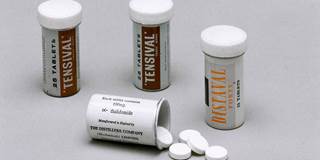In the pharmaceutical industry, most prescription medications are developed and marketed for a single disease, rather than a family of illnesses. But this approach increases research costs and limits innovation – and may be preventing us from discovering that the next wonder drug is right under our noses.
CHARLOTTESVILLE – Producing effective medicines requires huge investments of time and money. The average drug on the market today spent a decade in the lab and in clinical trials, and cost more than $2 billion to develop. Unfortunately, most prescription drugs are marketed for a single disease, rather than a group of diseases for which they could be safe and effective. This increases development costs, and complicates the discovery of new drug applications.

CHARLOTTESVILLE – Producing effective medicines requires huge investments of time and money. The average drug on the market today spent a decade in the lab and in clinical trials, and cost more than $2 billion to develop. Unfortunately, most prescription drugs are marketed for a single disease, rather than a group of diseases for which they could be safe and effective. This increases development costs, and complicates the discovery of new drug applications.